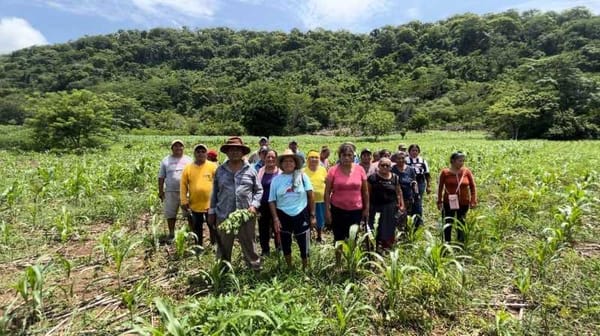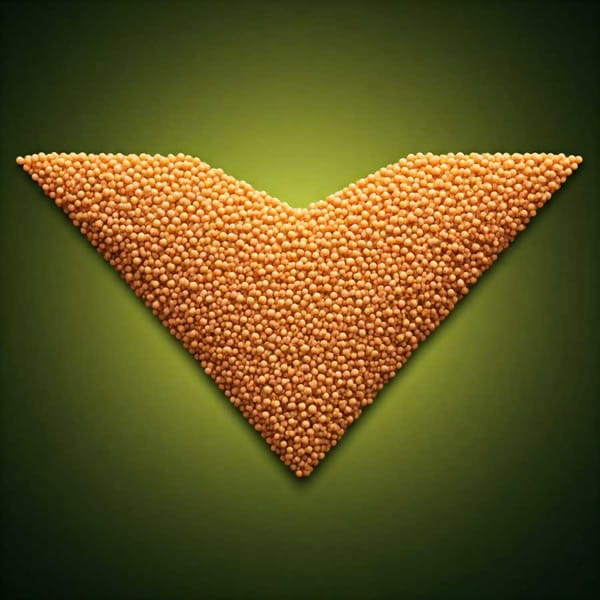Uruguayan painter Pedro Figari and the school of arts and crafts
Uruguayan painter Pedro Figari was a pedagogue who reorganized and directed the teaching of the School of Arts and Crafts; and the writer of works of philosophy, theory, aesthetics, and poetry.

When we mention Pedro Figari (born and died in Montevideo, Uruguay, 1861-1938) we immediately link him with his quality as a painter of international renown and fame (completing a famous triad with Rafael López Barradas and Joaquín Torres García), as one of the greats of Uruguayan art whose work acquires its definitive form and expression in the second decade of the 20th century, framed within an Americanist theme that vindicates the cultural roots and autochthonous features of Uruguay and the South American region.
But Figari's humanist and positivist stature is projected in multiple facets of diverse areas, often unknown both locally and regionally, but always complementary in its universal profile. These facets include the journalist Figari, founder of the newspaper El Deber; the criminal lawyer in defense of the most unprotected (including his famous "Almeida Case", which was the local version of the Dreyfus case); the national deputy against the death penalty, in favor of the creation of a School of Fine Arts and elaborating a General Plan for the Organization of Industrial Education; the pedagogue who reorganized and directed the teaching of the School of Arts and Crafts; and the writer of works of philosophy, theory, aesthetics, and poetry.
As proposed by G. Peluffo Linari in his book Historia de la pintura uruguaya ("History of Uruguayan Painting") volume 1, Figari's biography can be organized around two great cycles. The first, which is the one addressed in this article, runs from 1890 to 1920 and involves Figari as a pedagogue and reformer at the School of Arts and Crafts; this period is of special interest for the local historical context.
The era
In Uruguay, the last quarter of the 19th century was characterized by the consolidation of a firm State after a series of fratricidal confrontations, which tried to provide answers to the needs of the rural and urban oligarchies by establishing the hegemony of its agro-exporting economic model (meat, leather, and wool). In this way, an economy dependent on external demand was defined, with a reduced industrial development that was scarcely protected.
The period is known as the Belle Époque (1900-1930) -a period of expansion of capitalism, and the development of science and technology as the basis for the progress of humanity and the pillars of positivist philosophy- found Uruguay strengthened by a favorable external situation (the Balkan War and the First World War). This made possible the development of a meat processing industry as a result of foreign investments and the actions of the national State aimed at the welfare of workers with measures that favored health, social security, and education, among other areas.
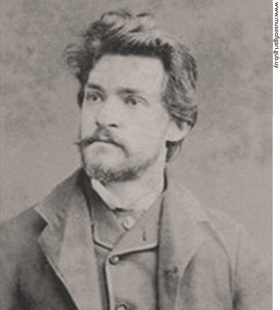
In this context, the State and society demand education. The latter is considered the engine of cohesion and development- the training of specialized labor and technicians required by the industry and new technologies, as well as university professionals in areas such as health, engineering, accounting, etc. In this context, the renovating experience promoted by Figari in the School of Arts and Crafts is inserted.
Before going further into the subject, I would like to outline some of the ideas that underpin Figari's philosophical conception of art, education, technique, and industry, grouped as categories that form the backbone of his thought, something that is already evident in Arturo Ardao's prologue to the book Arte y educación ("Art and Education"), a text that brings together Figari's writings on these subjects.
Figari's thinking
According to Ardao, Figari's thought can be organized into three major axes of categories - art and industry, criterion and vocation, and autonomy and Americanism.
Art and industry
Art and industry: for Figari, art and industry are two inseparable terms, so that education must possess this dual character and thus tend to be humanistic and creative as well as practical and utilitarian. Industrial education is linked to public education since it is the only way to reach all sectors of the population and thus achieve an integral and integrating education. For Figari, art is a superior category, a product of the evolution of man, technology, and the environment.
Criteria and vocation
Figari seeks the transformation of the country, but this will not happen depending on "good intentions" coming from the outside; a nation, as an organic whole, must grow from within and for this, it must make use and develop its potentialities. If what is sought is modernization, industrialization, and competition with more developed countries, more in quality than in quantity, it must begin by transforming man, to develop in him a spirit of work, of industriousness.
From this conception stems the idea of forming, according to Figari, "worker-artists", different from the modern and alienating concept of "worker-engineer" [the term is mine]; under Figari's conception, the worker is rational, conscious of the productive process and has the capacity to make changes in it to improve his product and consequently production in general.
Autonomy and Americanism
The notion of autonomy was understood by Figari from the point of view of taking advantage of the material resources of the territory, so that industrial development would be based on these resources in order to give them the most skillful and profitable application and provide the resulting products with added value and with the character of the producing regions. The raw materials must be worked with originality, a seal of their own that identifies them with their regions of origin, using an Americanist language, so as not to fall into a mere sterile imitation of imported models.
Once we have reached this point of our narration, we can begin to outline the circumstances that would propitiate the Figarian pedagogical experience at the head of a renewed School of Arts and Crafts.
School of Arts and Crafts
From a formal point of view, technical education arose in Uruguay in 1878 and was established under the Ministry of War and Navy. Its beginnings can be traced back to a boarding school for juvenile offenders in street situations or belonging to families where parental authority was not enforced. In this center, the inmates were taught reading, writing, arithmetic, and learning the trades of blacksmith, carpenter, saddler, and shoemaker. Until 1887, this school experienced a boom period.
That same year the school became a dependency of the Ministry of Justice, Worship and Public Instruction; then it passed to the National Commission of Charity and Public Welfare (1889); in 1908 it became a dependency of the Ministry of Industries, Labor and Public Instruction. Later, in 1915, when the Law of Industrial Education was approved, through which the Superior Council of Industrial Education was created, Pedro Figari was appointed director of the School of Arts and Crafts by the President of the Republic.
Upon assuming this position, Figari undertook a reform of a teaching, administrative, building, and production nature, as the culmination of arduous preaching in favor of the renovation of technical and artistic education from his positions as journalist, writer, and congressman. When Figari took over as director, the state of the school was as follows: the facilities were dreary; in the classrooms, the "Silence and Respect" signs discouraged interest in work; there was an imprint that made the school look more like a prison or a reformatory than a school (which was reflected in messages such as "Whoever spoils the wood for the third time while doing the exercises will be arrested").
The activities that were carried out consisted of exercises identified by a number and not a name, detached from their practical function, they did not take full advantage of the characteristics of the material, as they were repetitive and unrelated to individual interests; moreover, at the end of the activities, the product obtained was eliminated, without any return of what had been obtained or its exhibition as an achievement. The alienating nature of these practices can thus be understood.
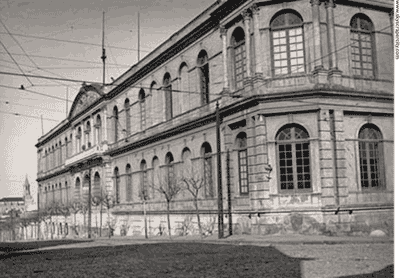
With the help of his son Juan Carlos (who was an architect, teacher, and painter), Figari fitted out classrooms and workshops to make better use of the mechanical forces involved and of the workspaces. Figari modified the study regime by introducing truly revolutionary changes for the time, which immediately captured the interest and motivation of the students. For example, the very common practice of physical punishment was prohibited, admission was liberalized in order to make access to education universal, and, consequently, the boarding school regime was eliminated.
Long courses -of 4 or more years-, which were based on repetition and bent the student's will, were no longer used. Under Figari's direction, classes were practical, of the greatest variety, as were expositions, explanations, and demonstrations, so that each student could take what he or she needed according to his or her personality; active participation centered on the student's interests was encouraged. At the end of the courses, diplomas were not awarded, but accreditations were given as a way of promoting the development of the subject in other areas of interest.
The number and scope of the workshops was expanded, offering possibilities to the female world, thus freeing the school from the common social schemes. Courses in nature drawing, decorative composition, modeling and molding, mechanics, foundry, blacksmithing, carpentry, sculpture, pottery, basketry, stained glass, and women's work, among many others, were introduced. Teaching in the workshops was based on the resolution of problems posed by the teacher, and from this, the various solutions were presented and analyzed, highlighting their achievements and weaknesses. The role of the teacher was to guide and orient this process.
From the design point of view, the simplicity and multifunctionality of the furniture (such as the "cupboard-table", the "sideboard-table" or the "bed-chest of drawers") was sought. Another formal component was the visibility of the structural and assembly elements of the objects, such as studs or wedges.
The end of the experiment
Worn out by the constant administrative obstacles and the resistance of a conservative, dependent, scarcely industrialized society, and in clear opposition to a model that proposed a cooperative production system and small workshops, Figari finally resigned from his position as director.
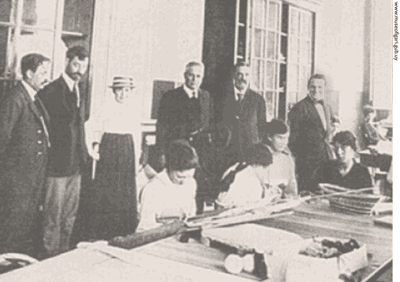
However, during the two years (1915-1917) of the new approach directed by Figari, more than two thousand five hundred pieces were produced, exhibited in the school's classrooms as well as in the interior of the country; the school enrollment multiplied; the "incorrigible" condition of the students was reversed in the function of a new sphere of freedom; and the structure of technical education was organized, created by law the Higher Council of Industrial Education (1916).
Two years later, in 1919, the famous Bauhaus of Weimar was to emerge in Germany with Walter Gropius as its founder and first director, with a spirit similar to the model outlined in Uruguay by Pedro Figari.
This is an excerpt from an article in Spanish by Matías Echenique, Source: Correodelmaestro.com

